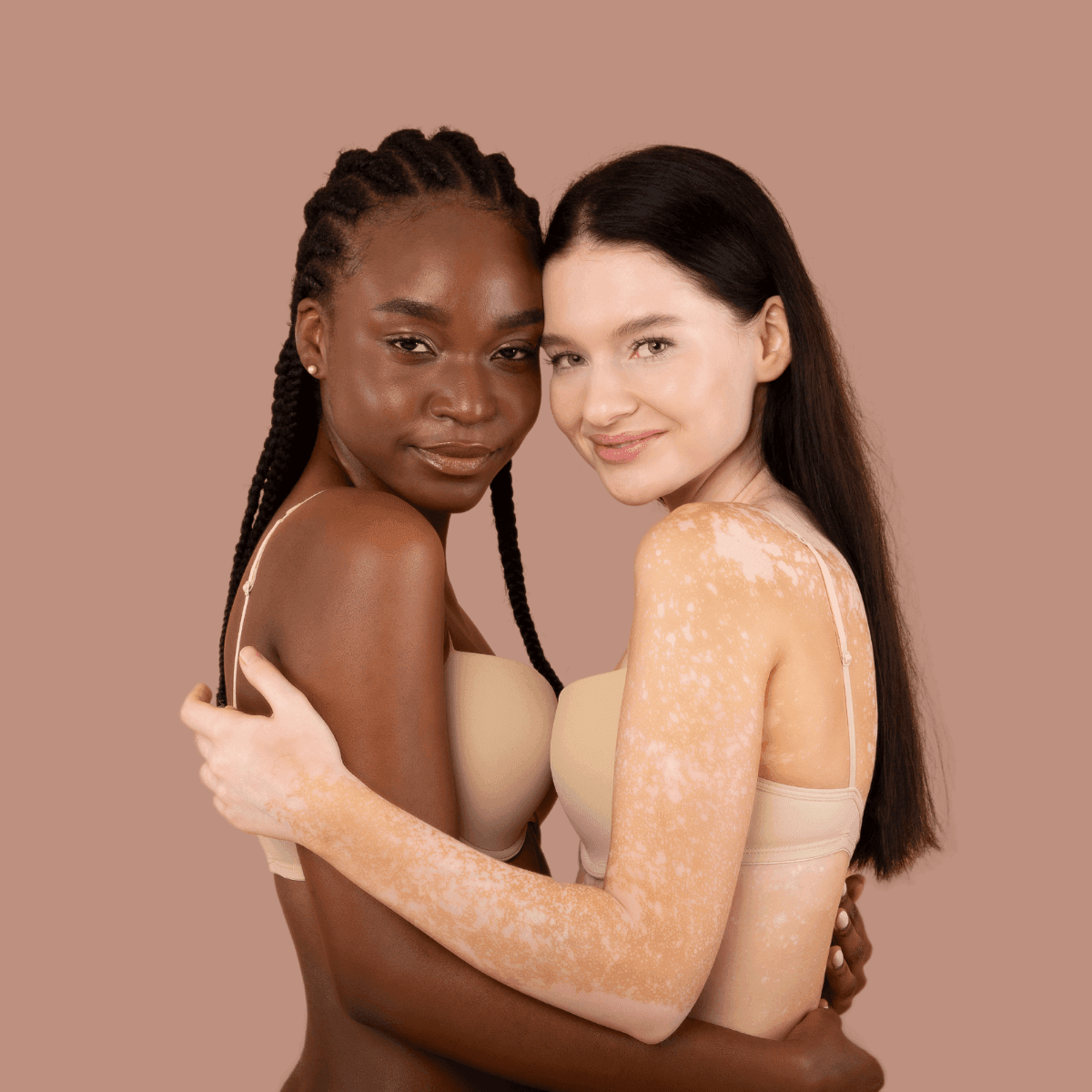If you’ve ever noticed someone with patches of lighter skin and wondered what’s going on, they might have vitiligo – a skin condition that’s as unique as the people living with it. While the medical world continues to unravel its mysteries, one thing is clear: vitiligo is much more than just a cosmetic issue. So, let’s dive in and learn more about this condition, what affects it, how it can be treated, and how to care for skin that deserves a little extra love.
Contents
What is Vitiligo?
Vitiligo is a long-term skin condition where pigment-producing cells, called melanocytes, decide to pack up and leave. This results in smooth, white patches of skin that can pop up anywhere – your face, hands, knees, even your hair. It’s estimated that 1-2% of the global population has vitiligo, meaning millions of people worldwide are rocking this unique look.
While it’s not painful or contagious, vitiligo can have a big impact on self-esteem. But here’s the silver lining: awareness about the condition is growing, and so is acceptance of skin diversity.

What Factors Affect Vitiligo?
Vitiligo isn’t caused by one single thing – it’s more like a perfect storm of factors. Genetics often play a starring role, especially if there’s a family history of autoimmune conditions like thyroid disease or type 1 diabetes.
Stress, both emotional and physical, can also act as a trigger. Had a bad sunburn recently? That could be another culprit. Some researchers suggest oxidative stress (an imbalance of free radicals in your body) might be at play. And let’s not forget chemical exposure, which could irritate the skin and set things off. The bottom line? Vitiligo is complex, and its triggers can vary from person to person.
What Types of Vitiligo Exist?
Vitiligo isn’t one-size-fits-all – it comes in different flavors, or rather, patterns:
- Segmental Vitiligo: This type sticks to one side of the body, like a loyal companion. It’s more common in younger people and doesn’t usually spread.
- Non-Segmental Vitiligo: The most common type, where patches show up symmetrically on both sides of the body – think hands, knees, and elbows.
- Focal Vitiligo: Small, isolated patches that decide to stay put in one area.
- Universal Vitiligo: Rare but striking, this type results in loss of pigment over most of the body.
Each type has its own quirks, but they all share the same cause: those elusive melanocytes deciding to ghost.
Can Vitiligo Be Treated?
The short answer is: yes, but it’s complicated. Vitiligo doesn’t have a universal cure, but treatments can help restore pigment or even out skin tone. The success of treatment depends on factors like the type of vitiligo, how long you’ve had it, and even your skin tone.
And let’s be real – some people embrace their vitiligo and don’t seek treatment at all, instead choosing to celebrate their unique skin.

Skincare Tips for People with Vitiligo
Whether you’re treating your vitiligo or embracing it, caring for your skin is key. Here’s how to keep it healthy and glowing:
- Sun Protection is Non-Negotiable: Areas without pigment are more prone to sunburn, so slather on that broad-spectrum SPF 50 and reapply often. Your skin will thank you!
- Moisturize Like You Mean It: Hydrated skin is happy skin. Look for gentle, fragrance-free moisturizers to keep dryness at bay.
- Load Up on Vitamin D: Since you’ll be avoiding the sun, use products enriched with vitamin D or consider supplements (with your doctor’s approval).
- Be Gentle: Avoid harsh scrubs and chemicals that can irritate your skin. Stick to hypoallergenic products designed for sensitive skin.
- Camouflage Options: If you want to even out your skin tone for special occasions, high-quality makeup or self-tanning products can do the trick.
- Regular Check-Ups: A dermatologist can help monitor your skin and tweak your skincare routine as needed.
Remember, the goal is to protect and nourish your skin, not hide who you are.
Embracing Skin Confidence
Vitiligo doesn’t define you – it’s just one part of your story. Many people with vitiligo, from fashion models to activists, are embracing their unique skin and challenging beauty standards. Organizations like the Vitiligo Society are shining a light on the beauty of diversity.
So, whether you’re exploring treatments or rocking your white patches with pride, know this: your skin is your canvas, and it’s already a masterpiece.
Vitiligo might be complex, but understanding it doesn’t have to be. From its causes to its treatments and skincare tips, there’s a lot you can do to take charge of your skin’s health. And while the journey might have its ups and downs, remember that every patch and pigment is part of what makes you, you.


